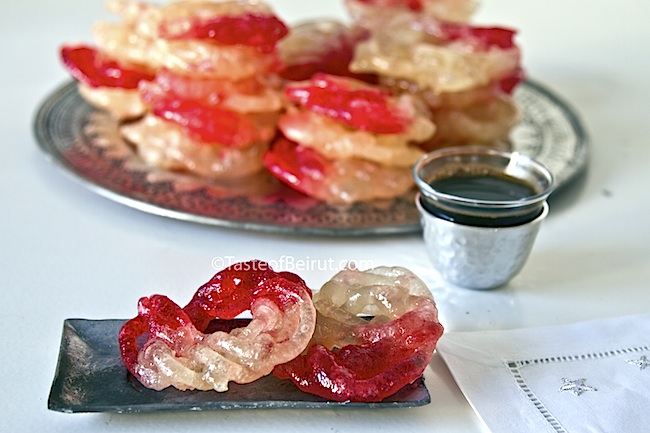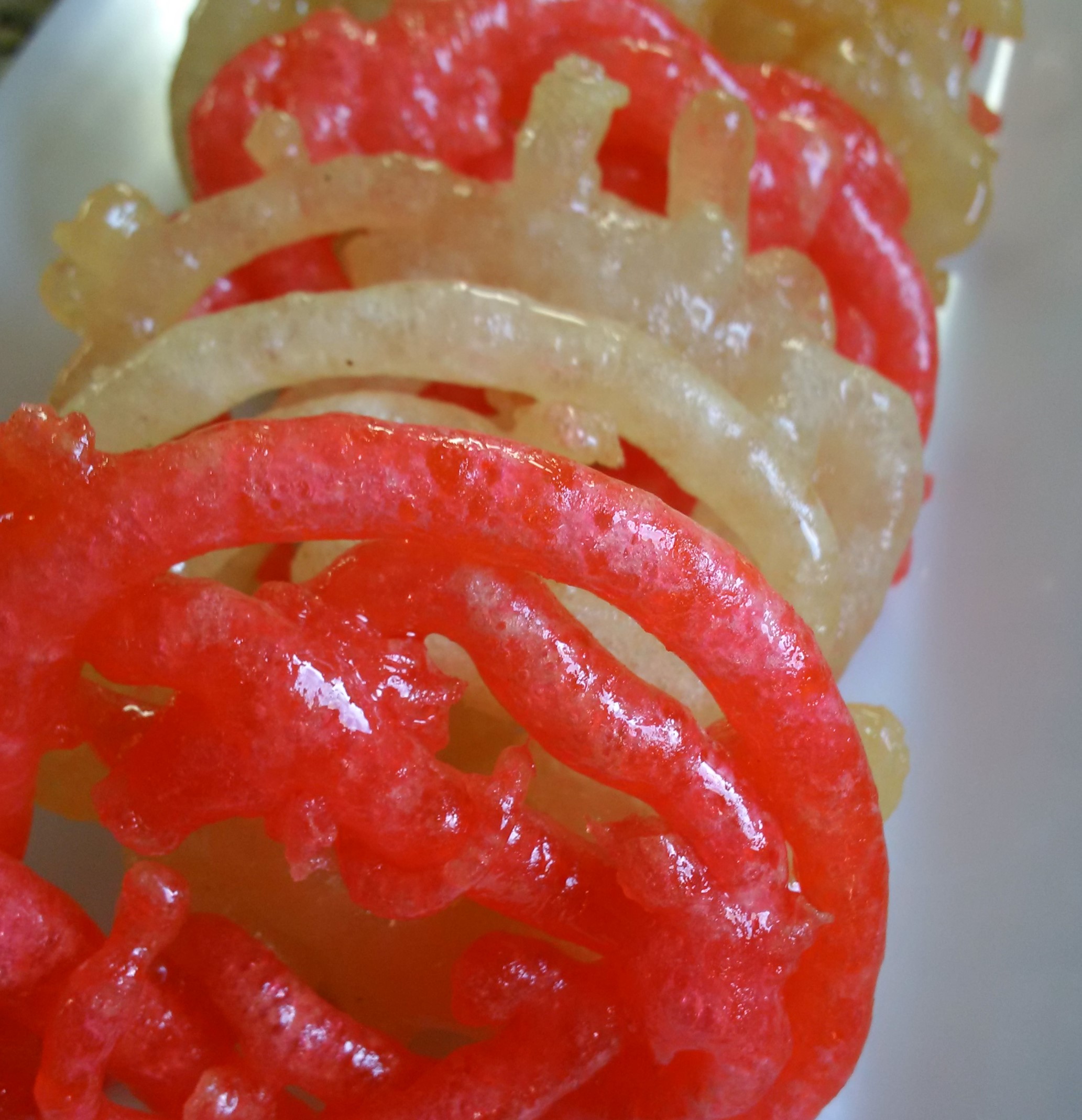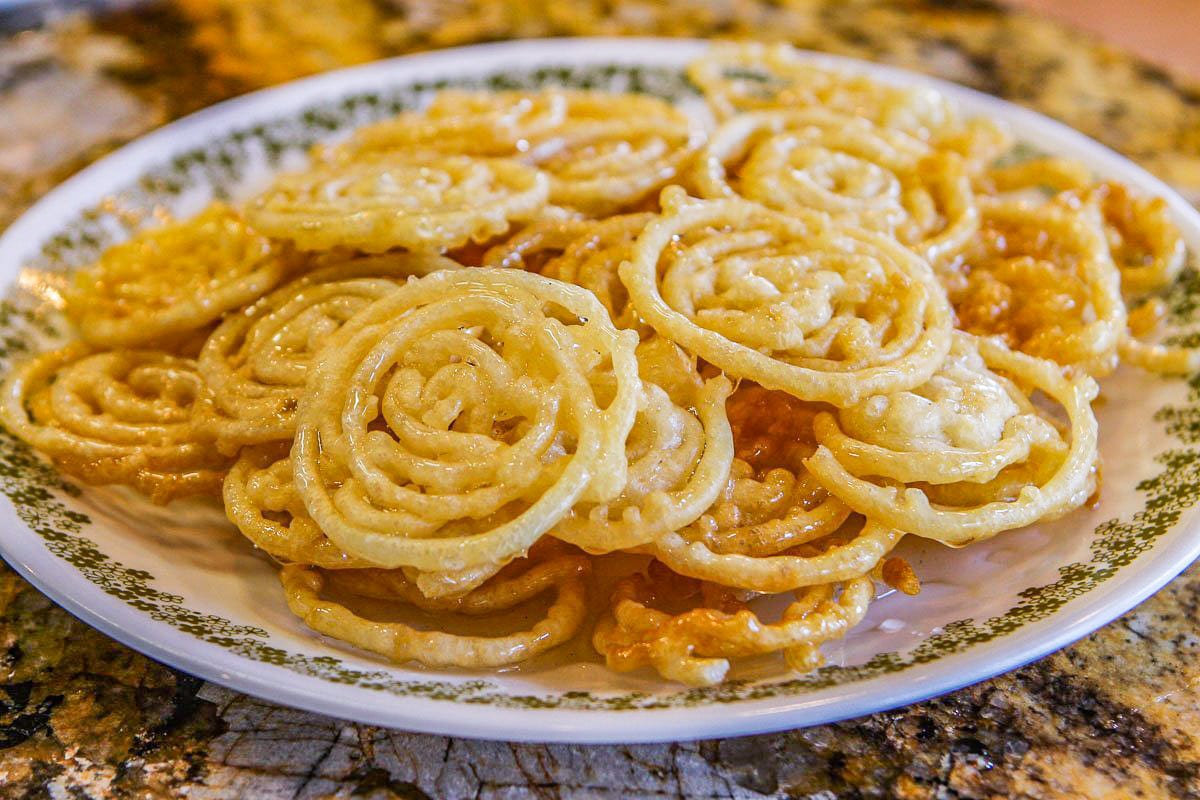Mushabak
mshabak, mshabbak, zalabia, zalabiya, jalebi, زلابية, zileibi, المشبك
Zalabiyeh is a fritter or doughnut found in several cuisines across the Arab world, West Asia and some parts of Europe influenced by the former. The fritter version is made from a semi-thin batter of wheat flour which is poured into hot oil and deep-fried. The earliest known recipe for the dish comes from a 10th-century Arabic cookbook and was originally made by pouring the batter through a coconut shell. The earliest known recipes for zalabiya comes from the 10th century Arabic cookbook Kitab al-Tabikh. In the old Al-Baghdadi book of recipes of the Arabs; the dough was poured through a coconut shell. This style of fritter is similar to the Indian jelabi and a 16th-century recipe from German cuisine for strauben made using a funnel.
Source: Wikipedia
Recipes

New Year's fritters (Mushabbak) - Taste of Beirut

Mushabbak (Fried Fritters) - Mediterranean Eatz

Zalabia (Lebanese Sweet Fritters) | Hadias Lebanese Cuisine









